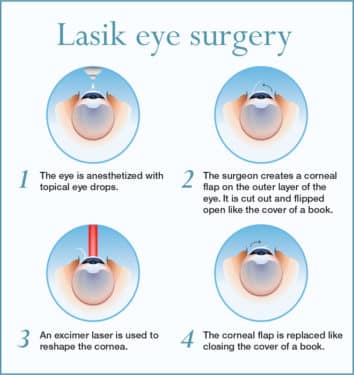Refractive Lens Exchange Explained: What Your Optometrist Isn't Telling You
Refractive Lens Exchange Explained: What Your Optometrist Isn't Telling You
Blog Article
Uploaded By-Bennetsen Ludvigsen
Have you ever before thought about Refractive Lens Exchange (RLE) as a choice for vision correction? While it isn't as widely discussed as LASIK, RLE could be a game-changer for your eyesight. Many people forget its benefits, assuming typical methods are their only choice. However what are the real advantages, and what might your eye doctor not be telling you regarding this procedure? Let's check out the ins and outs of RLE with each other.
Comprehending Refractive Lens Exchange: The Basics
Refractive lens exchange (RLE) is a surgical procedure that can significantly enhance your vision, especially if you're dealing with presbyopia or serious refractive mistakes.
During RLE, your eye surgeon removes your eye's natural lens and changes it with a synthetic one tailored to your vision requires. This treatment can fix nearsightedness, farsightedness, and astigmatism, giving you clearer vision without counting on glasses or call lenses.
https://www.healio.com/news/ophthalmology/20210608/cosmetic-keratopigmentation-shows-longterm-efficacy-satisfaction is generally fast, taking less than an hour, and a lot of clients experience very little pain. Healing is fairly quickly, enabling you to go back to your everyday tasks shortly after.
If you're considering RLE, speaking with your optometrist can assist you identify if it's the ideal choice for you.
Trick Distinctions In Between RLE and Standard Cataract Surgery
While both refractive lens exchange (RLE) and conventional cataract surgery entail replacing the eye's all-natural lens, their primary goals and individual profiles differ dramatically.
RLE is aimed at people seeking to decrease their dependence on glasses or call lenses because of refractive errors, often prior to cataracts establish. In contrast, standard cataract surgery typically targets individuals that have actually created cataracts, which shadow the lens and hinder vision.
The lenses used in RLE can give a wider range of vision adjustment, while common cataract surgical procedure typically involves standard monofocal lenses.
Furthermore, RLE prospects are often younger and in excellent total health and wellness, whereas cataract people may be older and have other wellness worries.
Choosing the ideal procedure relies on your particular vision needs and scenarios.
Prospective Benefits and Factors To Consider of RLE
If you're taking into consideration refractive lens exchange (RLE), you'll find numerous potential advantages that might boost your lifestyle.
RLE can offer you with more clear vision, lowering or removing the need for glasses or contact lenses. It offers an opportunity to deal with presbyopia and various other refractive errors all at once, usually improving your overall visual acuity.
In addition, RLE can be a great option if you're not an ideal prospect for LASIK. Nonetheless, it is very important to weigh the factors to consider, like the price, prospective dangers, and the recovery duration.
Discussing your certain demands with your ophthalmologist can aid you make an educated decision, guaranteeing you pick the most effective path for your vision adjustment.
Conclusion
In conclusion, refractive lens exchange supplies a distinct remedy for vision adjustment that exceeds what LASIK can offer. It's important to weigh the benefits against prospective threats and costs before choosing. Don't wait to ask your ophthalmologist the tough inquiries to ensure you fully understand the procedure and its ramifications for your vision. With the ideal info, you can confidently choose the very best option for your eyes and lifestyle.
